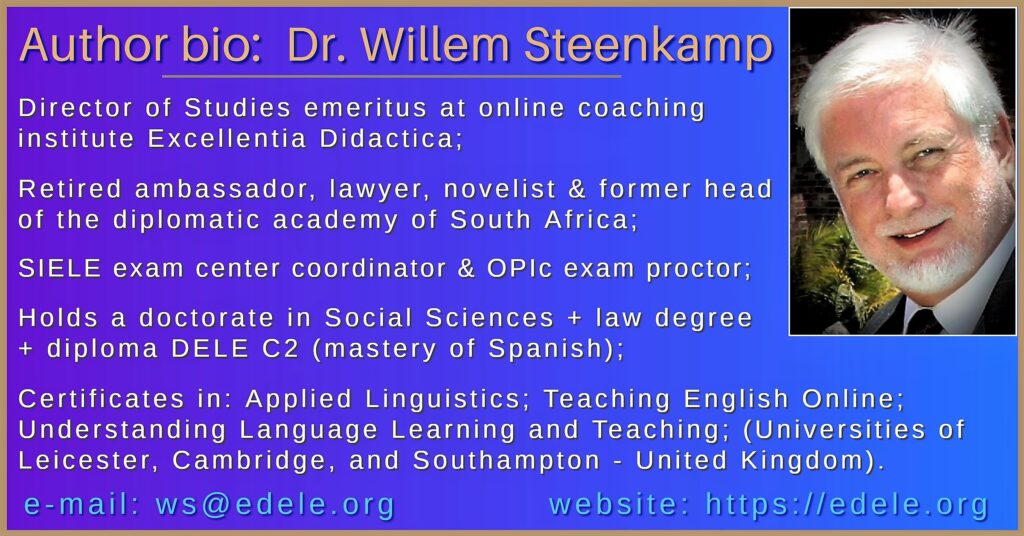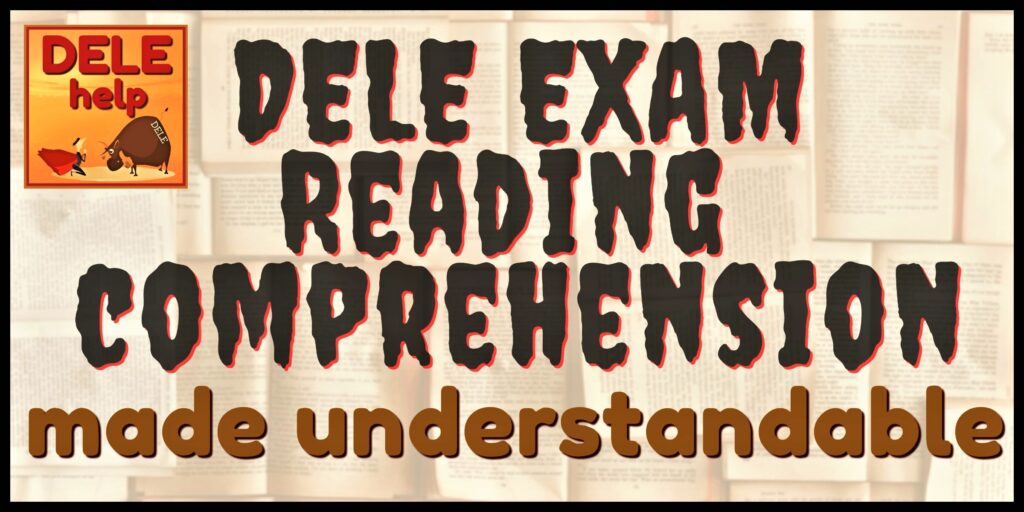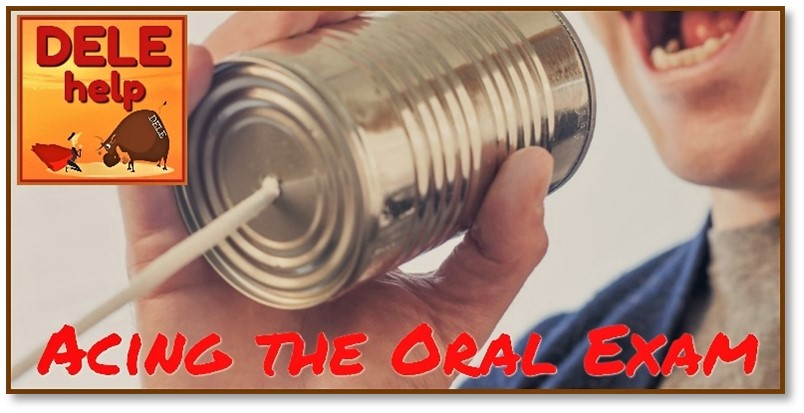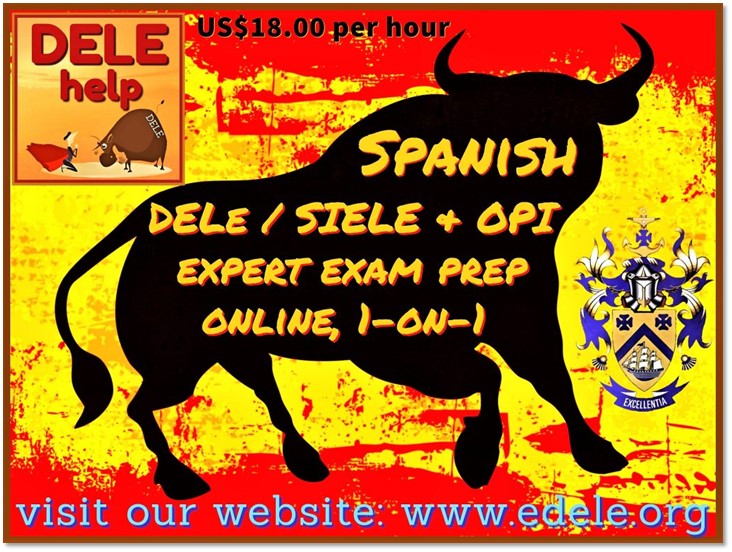TOP TEST PREP FOR VOCATIONAL SPANISH
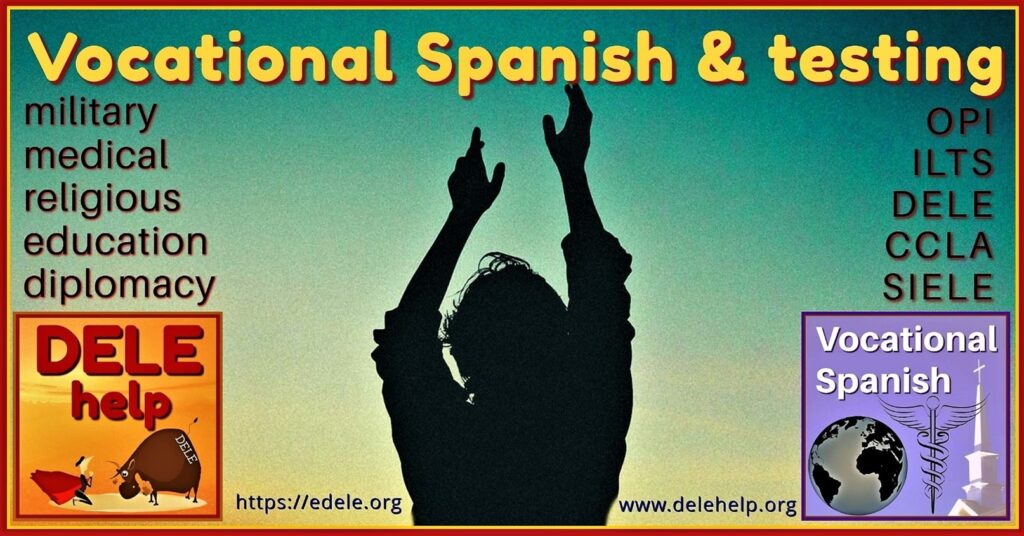
Are you preparing for a Spanish language exam that will test your communicative competency in a specific vocational field? Such as being a medical doctor or nurse, and your employer insisting that you must pass the CCLA? (Clinician Cultural and Language Assessment). Or in the military or diplomatic service, and needing to pass the OPI at a given level? Then you’ll know that the typical generalist Spanish language tuition available online, isn’t likely to help you prepare adequately. Because it neither focusses on your particular field (with its specialized terminology) nor is it expertly geared towards coaching you to pass your particular exam.
What you need, is top test prep for vocational Spanish: more specifically, for your vocation’s Spanish. In other words, a combination of Excellentia Didactica’s two targeted course packages: Vocational Spanish (specifically designed for those with a calling in the fields of medicine, religion, diplomacy, education, or the military) integrated with our acclaimed exam prep package, known as DELEhelp (which will coach you, 1-on-1, to deliver your best, whether you are tackling the Spanish government’s DELE or SIELE, or the American OPI (Oral Proficiency Interview), or something like the Illinois Licensure Testing System (ILTS) for teachers, or the CCLA for the medical profession.
Thanks to our emphasis on the personalization of your individual study plan, and on flexibility in compiling course content suited to your personal needs, plus our experience in both exam prep and in targeted vocational Spanish coaching for real-life situations, we can assist you. Because we understand that, in your case, a “one size fits all” standard language tuition package simply won’t do.

THIS BLOG POST: THE SCIENCE OF LANGUAGE LEARNING & THE CRITERIA USED IN THE EXAM TO SCORE YOUR “COMMUNICATIVE COMPETENCY” IN SPANISH
What we want to do in this blog post, is to explain what science (Linguistics, but lately also Neuroscience) has established as the way in which language competency is really acquired – because knowing this, is fundamental to you understanding how you need to go about preparing yourself for acquiring the communicative skills in Spanish that your vocation in real life, as well as passing your exam, will require.
The second objective is to explain how these different exams assess your competency – i.e., what are the scoring criteria? (These exams are all very similarly designed and based on the same principles). In other words, what your examiners are actually looking for, when they assess you. Because understanding the principles and criteria that underpin your exam, is essential for knowing how best to prepare yourself.
We won’t waste your time here with a hard-sell of our coaching services. If you want to know more about us, our rates, and the practicalities of how to easily book your sessions, how to make quick and secure payments (via PayPal) and how to engage with your tutor via Skype or Zoom, then you can get all of that on our website – you can simply click anywhere on the image below, and our website’s landing page will appear in a new window.
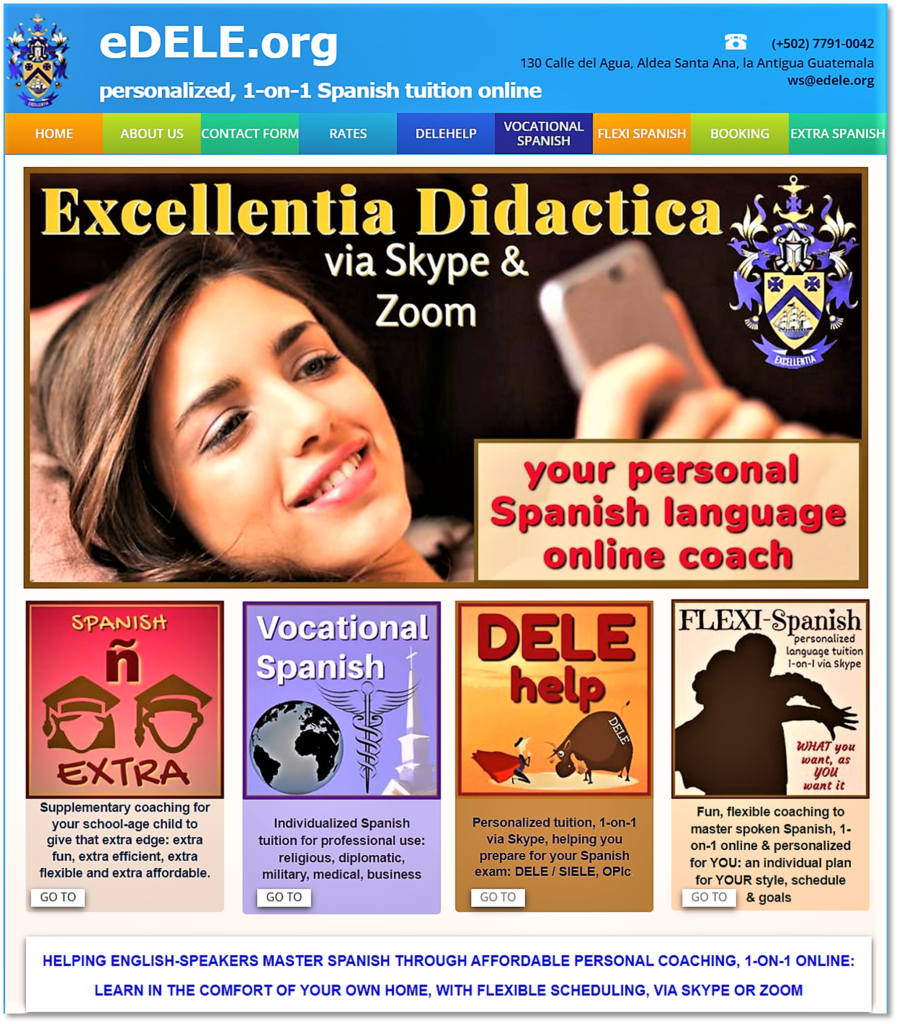
You can also view our DELEhelp YouTube channel’s free video talks with top tips about key Spanish exam prep issues; the link to our channel is: https://www.youtube.com/channel/UCSvCNnuilLmt4pRwxY8NE7g/videos

WHAT SCIENCE SAYS ABOUT HOW LANGAUGE SKILLS ARE ACQUIRED:
Now – let’s dive straight into what science has revealed about how so-called “communicative competency” is best acquired – that being the technical term for the “can do” skill set which these exams aim to test (meaning: the actual ability to effectively communicate in a practical, real-world setting, as opposed to merely possessing “book knowledge” about Spanish, as is typically tested academically).

This topic has been extensively explored in our earlier blog post headed with the above image (if you click on it, the particular post will open up in a new window, so you can read all the detail).
Suffice to say, that science has conclusively demonstrated that language competency is best acquired by means of three things: practice, PRACTICE, and yet MORE PRACTICE! Which, for best results, must be expertly guided.
Communicative competency in a foreign language is just like any other “can do” skill that we as humans acquire and sharpen with coaching, such as becoming proficient at a particular sport. Those athletes acquire their skills, not primarily from books, but from focused practice guided by expert coaches.
Plain logic and casual observation will confirm this – after all, toddlers certainly do not acquire their mother tongue by means of devouring grammar handbooks, just as pro golfers don’t achieve that level by poring over manuals – they both master it by means of realistic PRACTICE, benefiting from expert feed-back and guidance. Which is not to say that theoretical knowledge is entirely useless – it is, after all, a benefit that we as adults have, namely that we can access learning tools such as books, videos and interactive programmes, which will certainly facilitate our progress. But “studying” is a compliment to, and not a substitute for, the essential practice that internalizes the patterns and lexicon of the language. Because it is such internalization that allows us to respond and produce instinctively – just as the tennis player’s constant practice of the back-hand stroke, builds the “muscle memory” that eventually allows for that move to be instinctively executed, when required.
To illustrate the point – when you speak in your mother tongue, do you need to consciously think about grammar? No! You have internalized those patterns through much practice, which means that you can concentrate on framing and conveying your own message and on understanding the message you are receiving from your interlocutor. It is such ability on your part to understand, and in turn, to make yourself understood, that constitutes that exact “communicative competency” that your examiner will be looking for.
WHAT ARE THE COMPONENTS OF “COMMUNICATIVE COMPETENCY”?
There are four components to being competent at communicating in any given language. These components are paired into two groups. Since communication is all about message, the one group relates to your ability to yourself understand a message which has been directed at you (whether it be a message that you listen to, or that you read). In other words, the listening and reading comprehension sections of your typical comprehensive exams.
The other leg of messaging, is whether you can make yourself understood by others, when you speak or write – being the expression sections of a typical exam, namely expression in writing and oral expression (some exams only focus on the latter, such as the OPI – the Oral Proficiency Interview).
HOW TO DO WELL AT COMPREHENSION TESTING
If you have to do a comprehensive exam, which includes listening and reading comprehension, then you have to be aware of two critical factors that will determine whether you do well or not (the first factor applies not only to exam settings, but equally to the real world, and largely determines whether you will be able to grasp the messages received from other people whom you inter-act with while living your vocation).
That vitally important first factor is the adequacy of your “linguistic scope” or lexis (meaning, your command of a sufficiently extensive data set consisting of vocabulary of individual words, plus idiomatic expressions and everyday collocations or word pairings such as “good morning”, as well as link phrases).
If you are unfamiliar with the meaning of a word, expression, collocation, or link phrase, then you will obviously have difficulty in comprehending the message that you are reading or listening to. It stands to reason, of course, that you must also be sufficiently sharp as regards spelling, as well as to what any given spoken word sounds like, so that you can correctly identify which word is actually being used – otherwise, meaning will also escape you.
You can read more about the subject in these dedicated DELEhelp blog posts (just click on the cover images below, to have the posts open in new windows).
To help you expand your lexis, we will be providing you (when you enrol with us), at no extra cost, with our specially-designed in-house workbooks, prepared specifically to help English-speakers to master Spanish. These will help you expand your lexis, for example through explaining how to use modern digital flash card systems for memorizing words and expressions, as well as by introducing and explaining the many cognate words (that have the same meaning in both Spanish and in English and look and sound very similar).
With there being just 12 set patterns of conversion for these cognates, it means that – once you know these patterns – then you will have a very large instant vocabulary at your disposal. For example, cognate words that end in English on “-ce”, will invariably end in Spanish on “-cia”: police / policia, ambulance / ambulancia ). With English and Spanish both being Indo-European languages, it is said that some 38% of their vocabulary actually consist of such cognates. Thus, we will be teaching you how to fish, rather than spoon-feeding you individual fish.
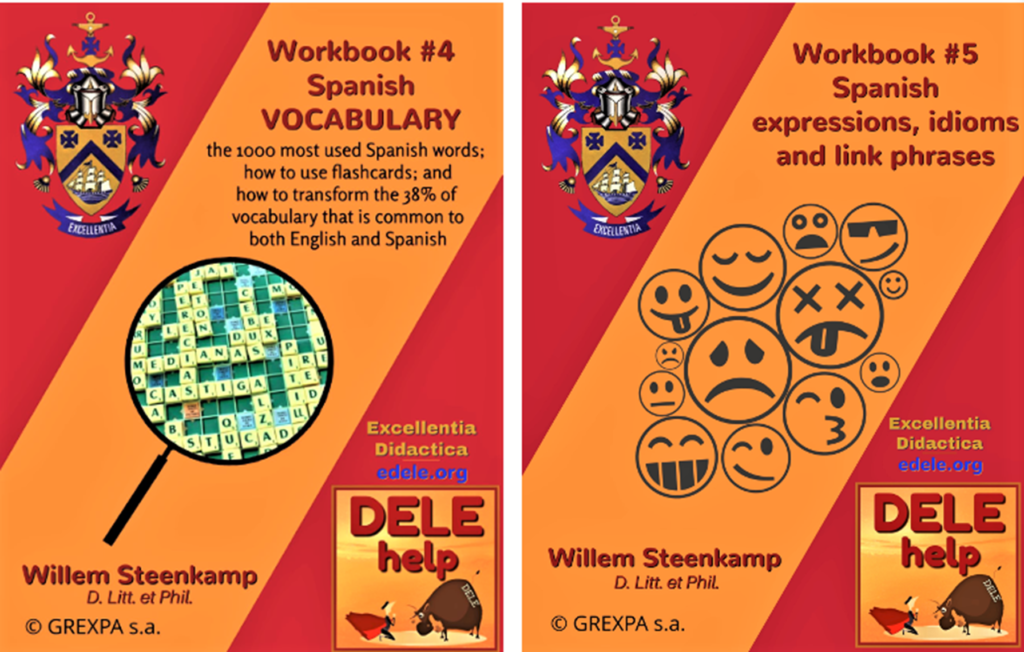
UNDERSTANDING EXAMINERS’ TECHNIQUES IN MUTIPLE-CHOICE COMPREHENSION TESTS
The other important factor to keep in mind when you answer comprehension tests (which most often consist of multiple-choice questions, where you must select and mark the most appropriate option) is the key technique that examiners use in order to determine whether you correctly understood the meaning – namely, the use of so-called “distractors” (i.e., red herrings).
Remember, these comprehension exams test your grasp of the meaning of the message. NOT your short-term memory or your powers of observation (i.e., such as spotting similarities between the master text and the offered question options). In fact, more likely than not, there won’t be any similarities noticeable in the correct answer (whilst those options that do show such apparent resemblance, most likely being distractors). Because, if you think about it, the obvious way of testing whether you truly understood the meaning of a particular word or phrase, is NOT to repeat it, but to build the “right” answer around a very different word which happens to be a synonym, and thus has similar meaning. So, always remember to watch out for red herrings!
WORDS AND PHRASES ARE BEST UNDERSTOOD WHEN YOU ARE FAMILIAR WITH THEIR CULTURAL AND HISTORICAL SETTING, AS WELL AS WITH THE IMPLICATIONS FOR MEANING THAT THEIR GRAMMATICAL CONTEXT IMPLY
What this sub-heading means, is that words and phrases aren’t islands leading a separate existence from the situational context that they are employed to describe in any particular phrase (which is why you will encounter so many different meanings listed against any given word, in a dictionary). Take the English word “cool”, and just think how many meanings it could have, depending on the cultural context in which it is used. You can also deduce the intended meaning from the grammatical construct in which it figures (i.e., “Cool!” as an exclamation, signifies a value-expression about an observed something being nice, where-as “cool the drinks” as verb in a command, signifies an action you are supposed to take.
To amplify your lexis, you therefore also need to possess a basic understanding, a reference framework, regarding the origins of the Spanish language and the cultural traditions of the Spanish-speaking peoples, as well as a grasp of the patterns (i.e., the grammar) of Spanish. For that, we will also be providing you with two free in-house workbooks, as basic orientation:
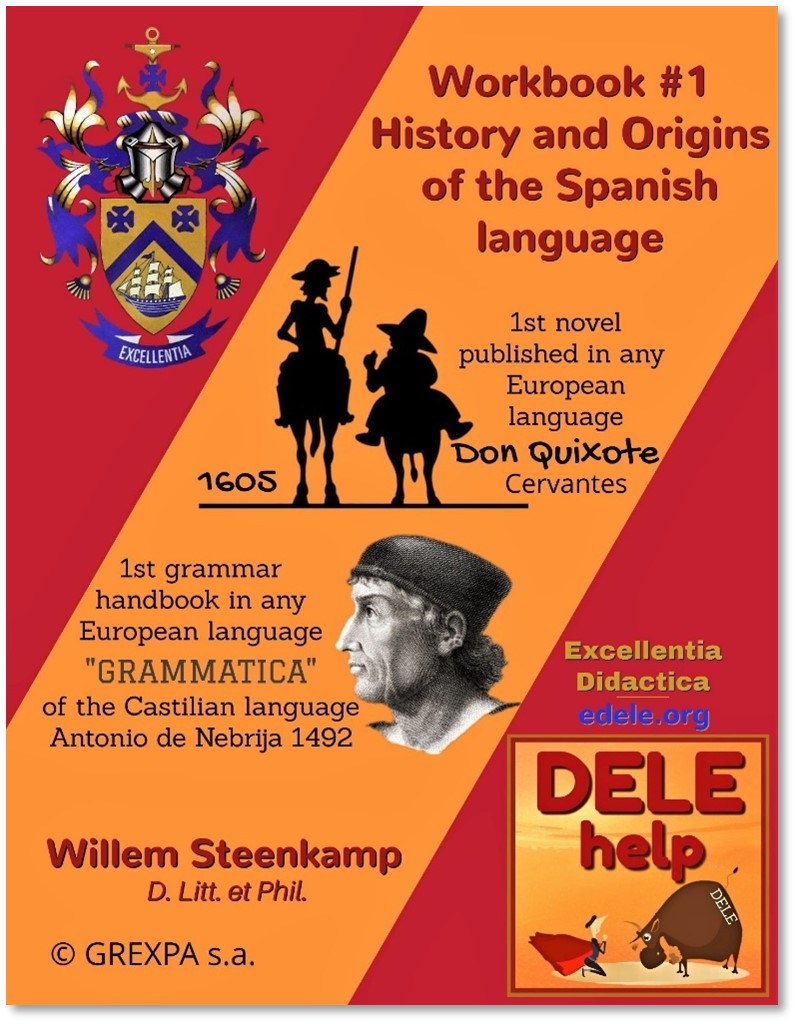
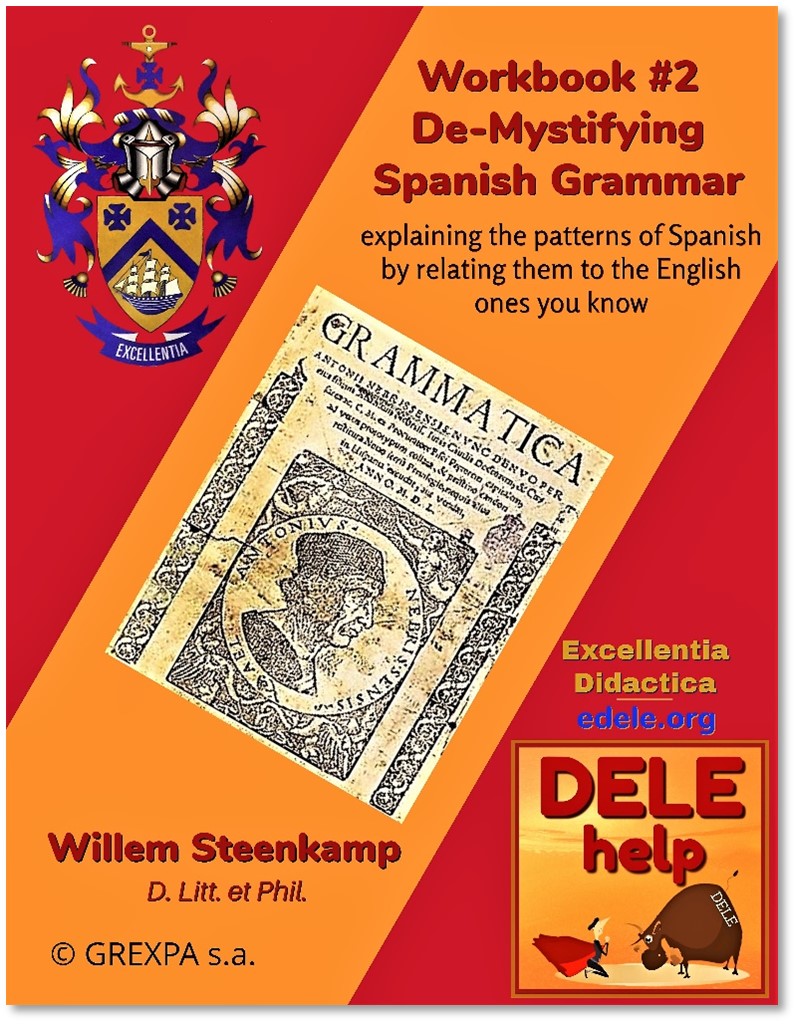
Additionally, and depending on the level of competency / exam pass that you are aspiring to achieve, we will also provide you with other workbooks on topics that we know from experience to pose difficulties for typical English-speakers – such as: how to make sense of, and learn to correctly use the Subjunctive Mood in Spanish.
THE EXPRESSION SIDE OF EXAMS – WHAT ARE THE SCORING CRITERIA?
To do well in any exam, you need to understand what the examiners actually want. What are they looking for? Which criteria will they use to score you?
All of the modern exams of communicative competency, in any foreign language (and no matter whether the exam be American or European), are based on the same principles. The policy document that gave birth to this system of testing that’s geared towards assessing real-world, “can do” skills (as opposed to merely testing abstract academic knowledge), is called the Common European Framework of Reference for Languages (the CEFR). It was developed for the European Union in the early nineties and has since been adopted around the world. These exams thus all essentially share the same four basic assessment criteria for scoring your ability to express yourself, whether in writing or speaking. Including oral exams such as the SIELE S4, the CCLA and the OPI, where you need to speak (whether it be directly to an examiner via phone, such as the traditional OPI and CCLA, or – as in the case of the modern computerised OPIc and SIELE S4, speaking into a computer microphone and being recorded, to be evaluated later).
The scoring criteria used by all these oral exams, boil down to:
- Your fluency, when speaking (or, when writing, how well you conform to the style and register of the particular kind of message, such as a formal letter, or an e-mail).
- Coherence
- Adequacy of your linguistic scope (i.e., your lexis) and
- Accuracy of language use, i.t.o. pronunciation and the patterns (grammar) of the language.
The following two DELEhelp blog posts will help you to understand these four criteria in more detail, and will also show you what to do to obtain a good score in an oral exam (click on the images, to have the respective posts open in new windows):
Should you be required to do only the OPI, the SIELE S4 (Oral) or the CCLA (all of which are spoken exams) then obviously oral expression will be the core focus of your preparation. But even should you need to do a comprehensive exam such as the DELE, the SIELE Global or the RPT, WPT and LPT proficiency tests of the comprehensive OPI package, then paying particular attention in your preparation to the oral exam component, will always be advisable. The reason for this is because statistics clearly show that most people who fail such a comprehensive exam in Spanish (like the DELE), actually failed the whole exam because of not having passed the oral component.
UNDERSTANDING YOUR PARTICULAR EXAM:
Once you understand what your examiner wants and how you will be scored, then it is important to be as familiar as possible with the format and practicalities of your particular exam. For this, we will also be providing you with dedicated in-house study resources, such as these workbooks for prepping respectively for the OPI / OPIc and for the DELE / SIELE:
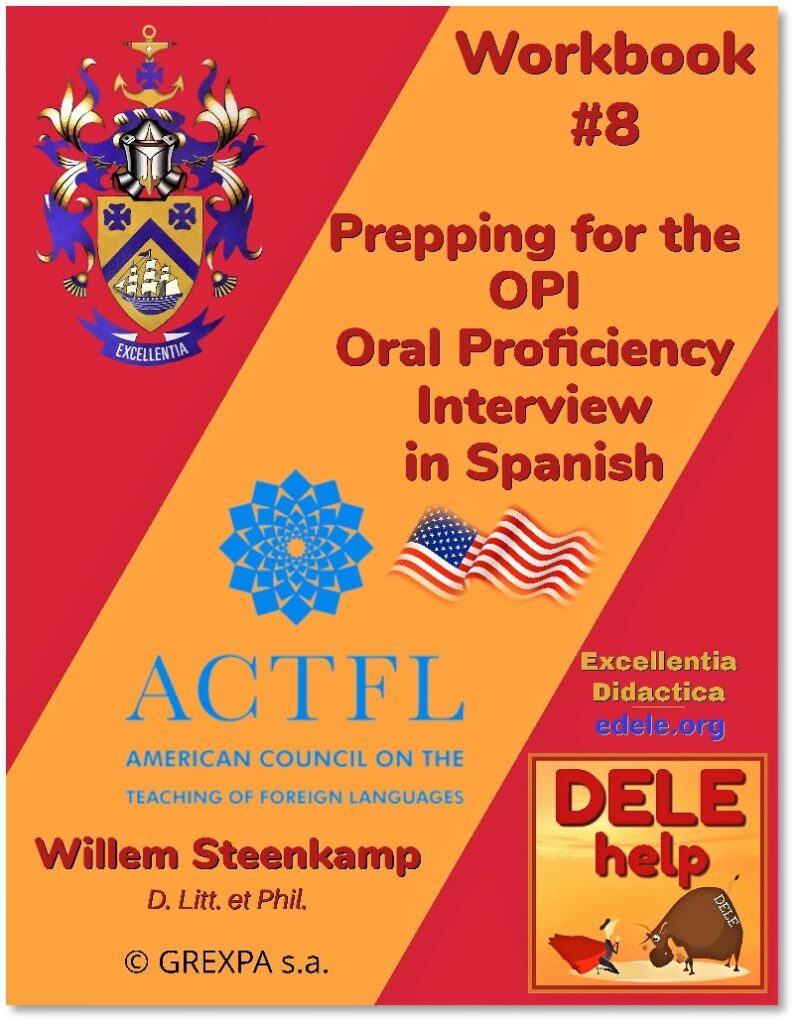
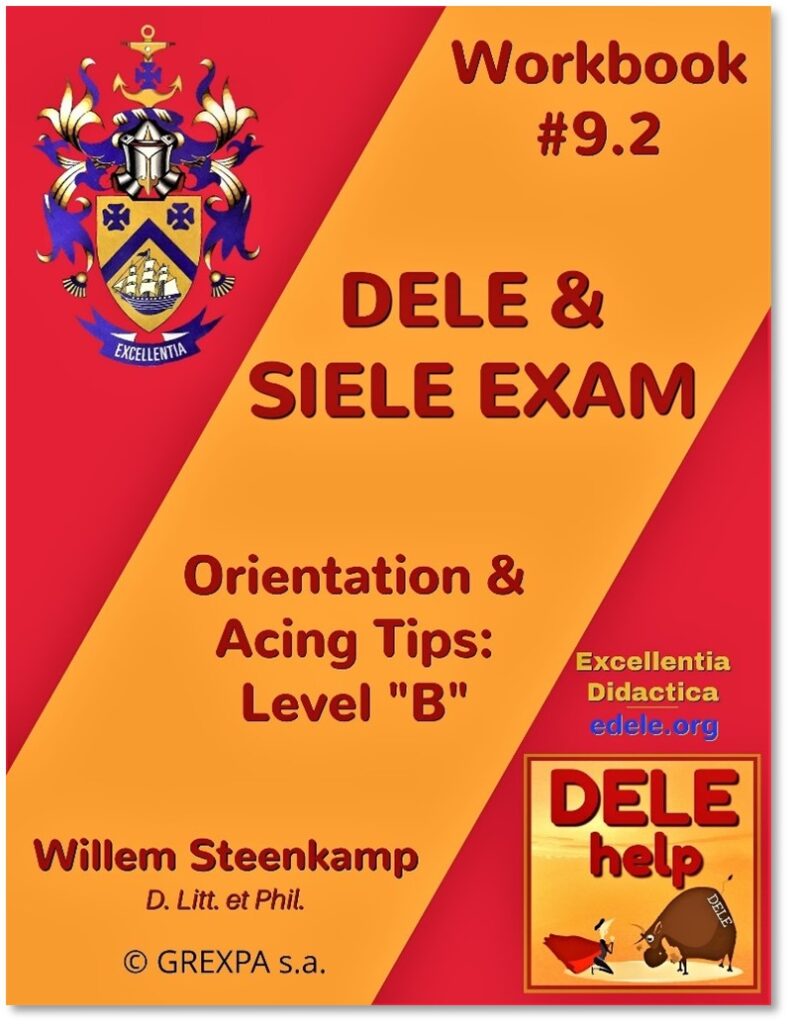
FREE SAMPLE WORKBOOKS ARE AVAILABLE, WHICH YOU CAN OBTAIN BY SIMPLY FILLING OUT OUR QUICK “CONTACT INFO” FORM (we will never send you any unsolicited e-mails, nor will we sell, or in any other way pass on your e-mail account information to any third parties).
For the form, CLICK HERE (please tell us whether you would like to receive the download link for WB #8 – OPI, or for WB #9.2 – DELE / SIELE).

WHAT MAKES “VOCATIONAL SPANISH” DIFFERENT FROM GENERALIST SPANISH?
It stands to reason that, no matter in which vocational field you will be applying your Spanish skills, the patterns of the language (in other words, its grammar) won’t change. The basic grammar “rules” remain the same – no matter whether you are conversing with patients, or just buying something to eat at a street stand. To become truly proficient at communicating in Spanish, there is no escaping the need to get a handle on the basics of how Spanish structurally works and to internalize its patterns: thus, its grammar.
This often presents more of a problem to English-speakers than to those born into other Indo-European languages. The reason being that English – with its hybrid origins – has, through constant simplification, in many ways deviated considerably from the standard Indo-European grammatical template to which Spanish still adheres. To illustrate – Spanish shares with other Indo-European languages things like the heavy conjugation of verb-endings, using gender and employing the subjunctive mood (notions that English has more-or-less jettisoned over time).
A big advantage that we at DELEhelp can share with you, is that our course material has been designed by English-speakers, specifically for English-speakers (as author of our in-house workbooks, I have the advantage of myself having “been there, done that” – in the sense that I’ve myself experienced what it is like to prepare for, and pass the top DELE C2 Spanish mastery exam). Of course, our coaches are native Spanish-speakers, but unlike many Spanish language schools that approach your challenge from their own first-language Spanish academic background, we understand where you are coming from as English-speakers, and also where you need to go, plus how best you can get there – based not only on sound science, but on having shared that hard practical experience of having had to do it myself.
The good news about the need for grasping the basics of Spanish grammar (when you put its relative weight in the scoring system of these modern “real world, can do” exams into proportional perspective), is that the assessment is, above all, about how effectively you are communicating – about understanding and being understood. Therefore, getting your message across, fluently and coherently, is far more important i.t.o. how you will be scored, than finicky attention to the fineries of formal grammar. What this means, is not that you can ignore, or murder the patterns of the language (because that would clearly make it difficult for others to follow your true meaning). It simply means that, unlike in school or college where the examiners would typically be watching, eagle-eyed, for the smallest error in grammar and then deduct marks, the examiners in an exam of communicative competency, will only penalise you if the error in fact did interfere with understanding you.
Be that as it may, our objective would clearly be to help you internalize the patterns of the language so well, that you will be as grammatically accurate as possible, in order that you may score as high as possible. But what we will not do, is to focus the entire coaching effort just on formal grammar lessons, since that will count towards only a fraction of your overall mark (being just one part of the fourth criterium of “accuracy of language use” – with these criteria all being equally weighted). When designing your personal study plan, we need to pay balanced attention to the other three scoring criteria as well, guiding your practice so that you can become fluent and coherent, and demonstrate a sufficiently ample linguistic scope (the latter, in order that you have the ammunition – i.e., the words / terminology, expressions, and collocations – with which to express your message. In the course of such practice, your grammatical accuracy will naturally improve, with our feed-back and guidance.
It is this latter criterium of “adequacy of linguistic scope” that sets Vocational Spanish apart from generalist, everyday “street Spanish”. Because your chosen field has a substantial own terminology, which you will have to master for an exam such as the CCLA in the medical field, for example.
What we also bring to the table, is practical experience of going beyond mere academic knowledge of the Spanish language, to the real-world need for acquiring the “can do” skills that would enable one to effectively communicate in Spanish, in an actual professional vocational setting. Apart from the privilege of having served my native country (South Africa) as ambassador, i.a. representing our justly famous President Nelson Mandela, I also served as head of South Africa’s diplomatic academy. You can therefore trust that, as regards Vocational Spanish for diplomats (or the military, on postings abroad), we have the first-hand subject knowledge and high-level experience to be able to appropriately guide your coaching. The same applies to Vocational Spanish in an educational setting (such as teachers needing certification for licensing purposes). My own academic background (Ph.D., and exposure to the science of Didactics as head of the academy) ensured that I have experienced your world of teaching first-hand, and can thus relate to and understand it as well.
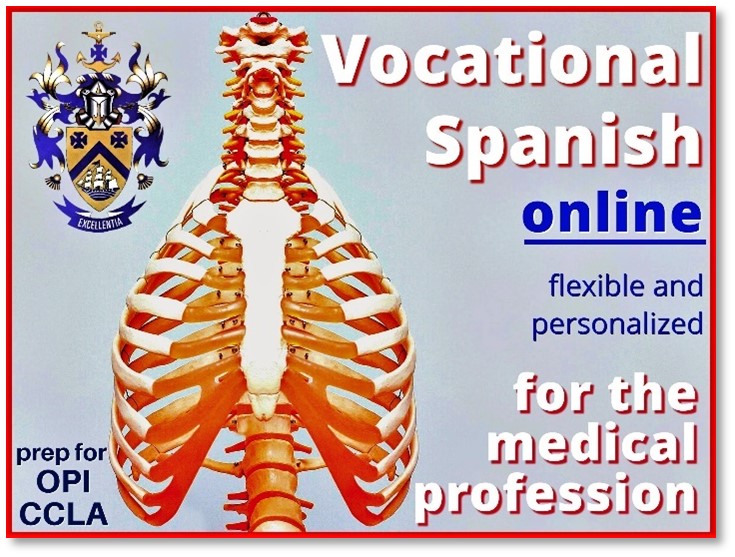
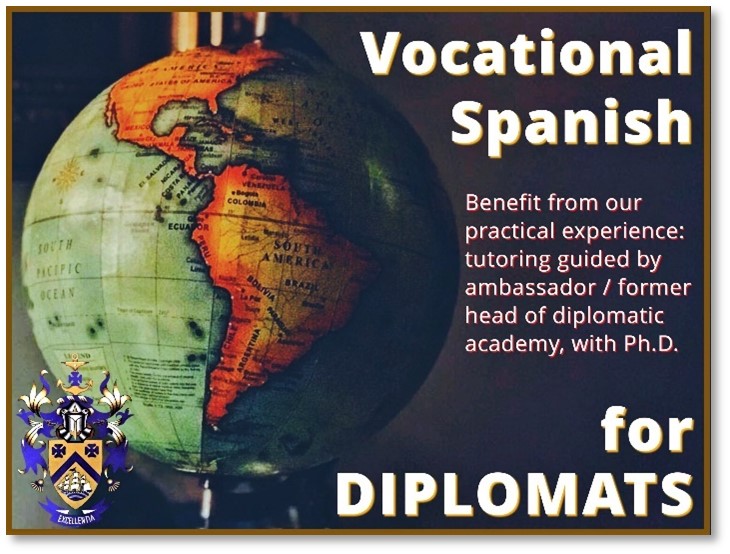
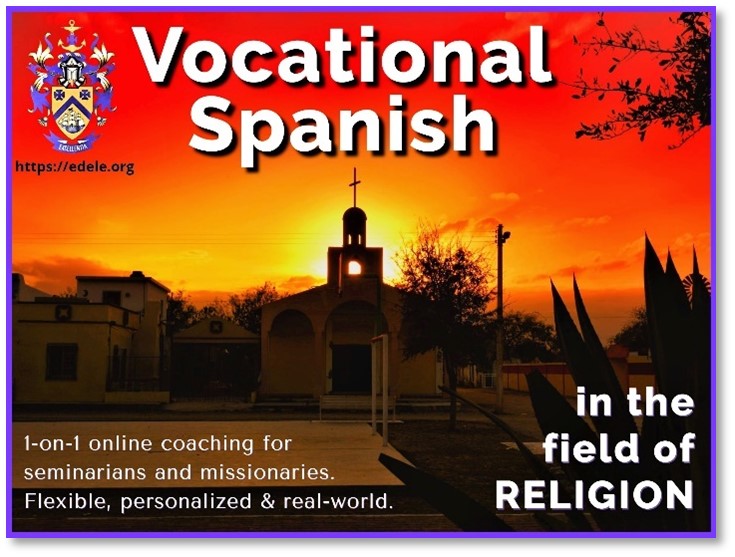

We can show you now, how we approach the vocational coaching i.t.o. coaching methodology (using here, as a representative example, some of the role-play themes for theological seminarians and missionaries used in our simulations of real life). Have a look at this Compendium of resources and role-play themes that we use to simulate vocational reality in the religious field (we of course apply the same practical, real-world approach, geared towards helping you to be able to actually do, rather than to simply know, in the coaching in the other vocational fields as well). Here is a short extract, showing the realistic role-play simulations we employ (the coach playing the role of parishioner, and the seminarian being the priest or missionary who must engage with, and provide guidance to the congregant).
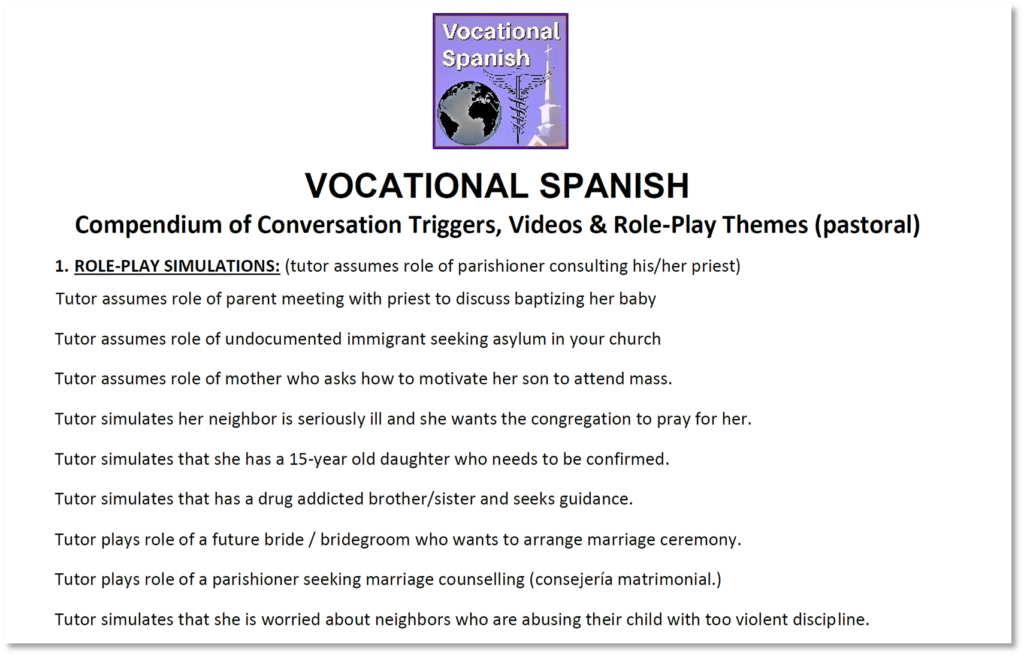
You can view the full Compendium in a new window, by CLICKING HERE
This blog post is not intended (through being a necessarily short post), to provide you with detailed, exhaustive guidance for your preparation to pass your Spanish exam in your vocational field. What we aimed to do with this post, is to provide you with an overview, an orientation (to point out the basics, and to show you that there are indeed resources that you could tap into). The detail that you will need, are in the other blog posts linked to, and of course in our work-books and in the expert guidance that our coaches can provide.
If you would like to have a look at our FREE, no-obligation sample work-books for the OPI/OPIc and the DELE/SIELE, please remember that you can request them by using our convenient CONTACT INFO FORM.
Here are four more of our blog posts that are most relevant to prepping for your exam, which you may want to have a look at:
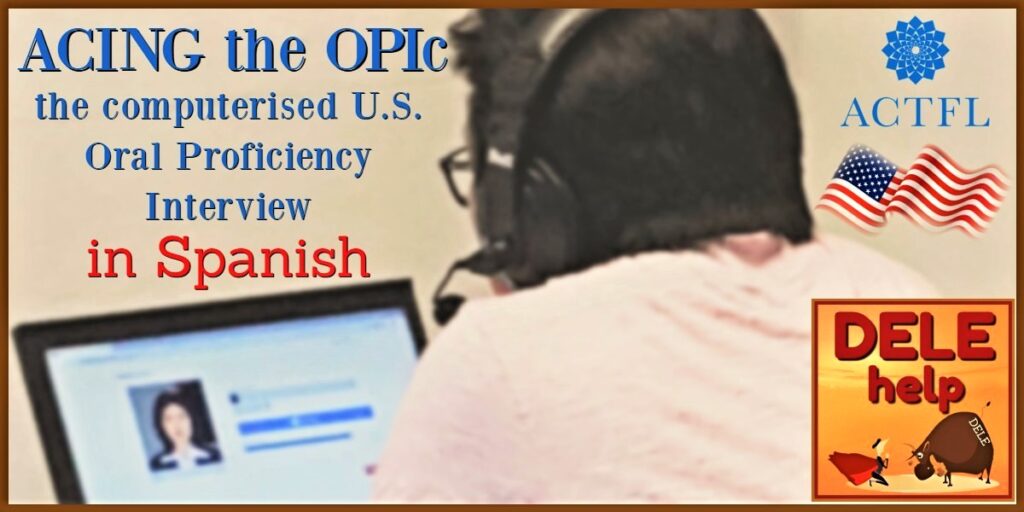
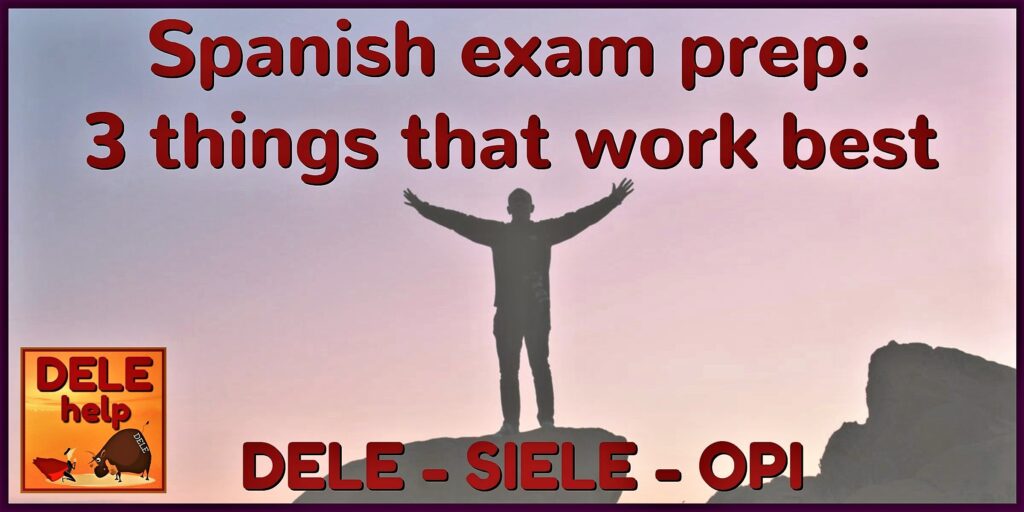

More information about us and our approach to coaching you for success in your Spanish exam, can be found on the DELEhelp page of our secure Excellentia Didactica website. You can have the page open in a new window, by clicking anywhere in the image below:
¡Buena suerte! with your exam prep
Saludos cordiales
Willem Steenkamp
Director of Studies emeritus
